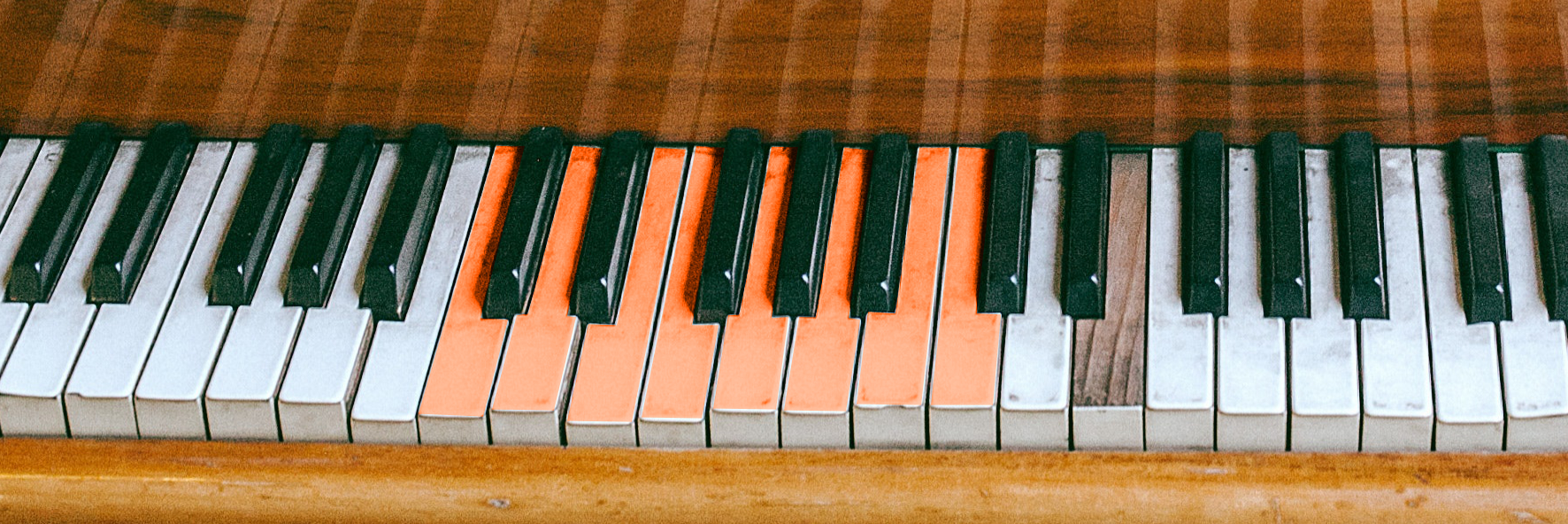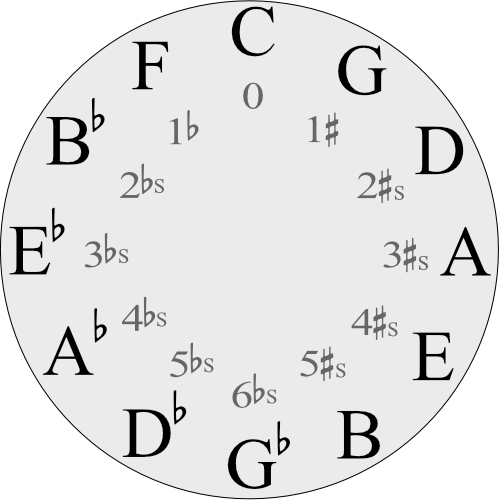Why is it Always the Key of C Major?

You may have noticed that the key of C major pops up all over the place, in books, videos, articles, and seemingly everywhere else. Most of the examples on this site default to C major as well.
So why is it always C major?
This definitely isn’t just a coincidence. Let’s look in detail at what’s special about this particular key.
What is a key anyway?
The simplest way to think of a key is in terms of a collection of notes called a scale. A major scale is a series of notes with the following sequence of intervals (W for whole step, H for half step):
W - W - H - W - W - W - H
A half step is the smallest possible distance between two notes in the tuning system used for ordinary European guitars and pianos. On a guitar, it’s the distance between two adjacent frets. On a piano, it’s the distance between adjacent keys.
A whole step is just two half steps.
The name of the key tells us which note our scale begins and ends on. So in the key of C major, we have the following sequence of notes:
C - D - E - F - G - A - B - C
W W H W W W H
On a piano, these correspond to the white keys.

If you look carefully, you’ll notice that there is no black note between E and F or between B and C. Those are the two half steps in the C major scale.
The rest have a black note in between, making them whole steps.
So a key includes a scale. But it also includes a group of chords. In major keys, there is one chord per note in the major scale.
Here are those chords for C major (with Roman numeral labels, uppercase for major chords and lowercase for minor):
C - Dm - Em - F - G - Am - B° I - ii - iii - IV - V - vi - vii°
Each of these chords is built only out of notes from the C major scale. Chords built only out of notes in a key are called diatonic.
Diminished chords (°) can be tricky to use, but other than B°, all of these diatonic chords will somehow “sound right” together.
C major is the easy key
So now that we know what a key is, we can look at why the key of C major is used so frequently in instructional materials.
A big part is that C major is an “easier” key to use and understand than the others. But why?
I mentioned above that on a piano, the C major scale includes only white notes. In fact, every white note on a piano is part of the C major scale. Even if you know nothing about music, you can relatively easily learn to play just white notes.
Now, if you don’t treat C as your root (or “home”) note, you might accidentally play in a different mode, but we can ignore that point for now.
So it’s pretty easy to play C major on the piano. Let’s compare the C major scale to the A major scale:
C major: C - D - E - F - G - A - B - C A major: A - B - C# - D - E - F# - G# - A
The A major scale has three sharp notes, which correspond to black keys on the piano. In order to play notes and chords in A major, you need to remember what those sharp notes are.
The combination of sharp or flat notes is different for every key. Even if we just stick with major keys, there are 12. That’s a lot to memorize.
It’s not a coincidence that C is the easy key
The C major scale corresponds to the white notes on the piano. It’s also the first key in the Circle of 5ths, sitting at the top. It has no sharps or flats.

There’s nothing special about the actual physical frequencies of the C major scale that make these things true. In fact, it goes the other way around.
As a matter of convention, the frequencies corresponding to the notes in C major were associated with white keys on a piano, and were named C, D, E, F, G, A, and B.
After all, you could tune a piano differently so that the white notes correspond to the A major scale. And if you wanted to, you could call those notes whatever you want.
So in a way, C major has been chosen to be the default key, and note names, musical notation, and the layout of the piano reflect this.
For example, the fourth note of C major is called F. In the key of A major, the sixth note is one half step higher than F, and we call it F#.
In a sense, you can think of the names of the notes in all the other keys as derived from the names of the notes in C major. The history of the note names is much more complex than this, but we’ll have to leave those details for another time.
It’s easier to think about chord theory in C major
When you start to dig more deeply into chord choices for writing chord progressions, you will encounter things like the concept of borrowed chords.
For example, you can borrow chords from the natural minor key to create color and interest in songs which are mostly in major. A few of those chords are the bIII, bVI, and bVII chords (the “b” symbol means “flat”). In the key of C major, these borrowed chords are:
bIII: Eb
bVI: Ab
bVII: Bb
If you know that the third note in the C major scale is E, it’s very easy to figure out what the bIII chord is. Same goes for the sixth note (A) and seventh note (B). And all of these notes marked flat correspond to black keys.
Now let’s look at what those borrowed chords are if we’re in the key of A major:
bIII: C
bVI: F
bVII: G
Hmmm… The flat third is C. Given that the third note in A major is C#, that makes sense, but you couldn’t just read that off of the notation “bIII” as easily as in the key of C major.
In the key of A major, the bIII does not correspond to a black key or a note marked as flat.
As another example, let’s look at the borrowed chords in the key of G major:
bIII: Bb
bVI: Eb
bVII: F
The third note in the G major scale is B, so the bIII is Bb. But the seventh note is F#, so the bVII is F.
If you’re not in the key of C major, there’s just more you need to know and memorize to be able to figure things out off the top of your head.
It’s good to learn multiple keys, but teaching concepts in C major is simpler
The key of C major is often treated as the standard key signature. This creates a danger of sticking with it for everything you do.
Common advice to musicians in training is to practice exercises in every key. This is relatively easy on the guitar, where the same patterns are moved up and down the fretboard. It’s more difficult on the piano, where you need to learn which combination of white and black notes make up a given key.
But in both cases, it significantly broadens what you can comfortably do on your instrument.
The same is true for theoretical concepts. It’s valuable to know off the top of your head which sharps and flats are in a given key. For example, you definitely don’t want to write all your songs in the key of C major.
If you’re in A major and you want to borrow a bVI, it’s useful to know that this would mean F. There are tricks which can make this process easier, but it still takes commitment.
Learning and practicing all of the keys is a great idea. But most of all I recommend writing songs in different keys. You can actually do this even if you don’t learn any of the theory. All you really need is a table telling you which chords are in which key.
I have a cheat sheet↗(opens in a new tab) you could use for this purpose, but you can also quickly write one on a slip of paper. I’d suggest keeping it with your songwriting materials so that you can more easily experiment with different keys in your writing.